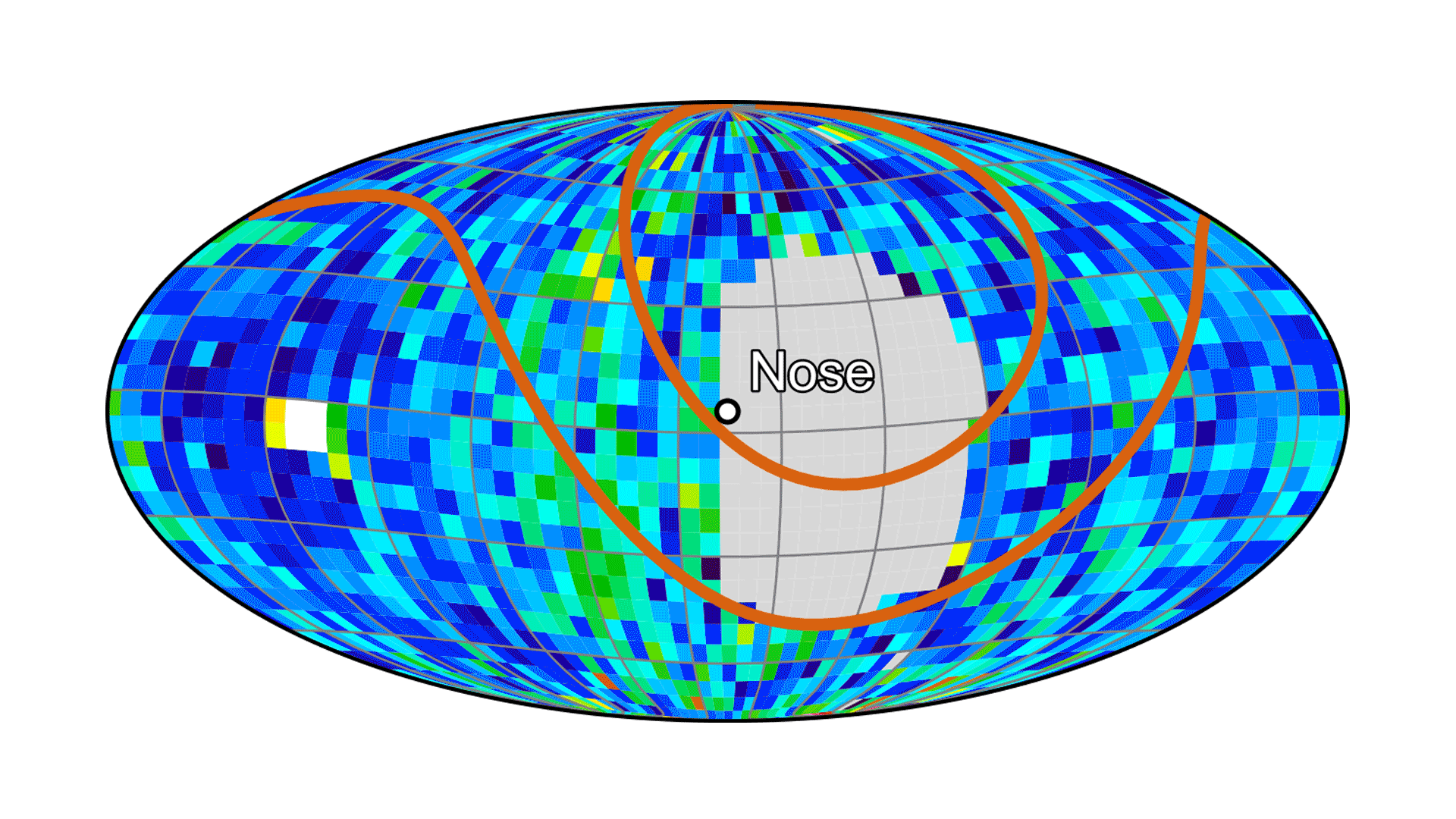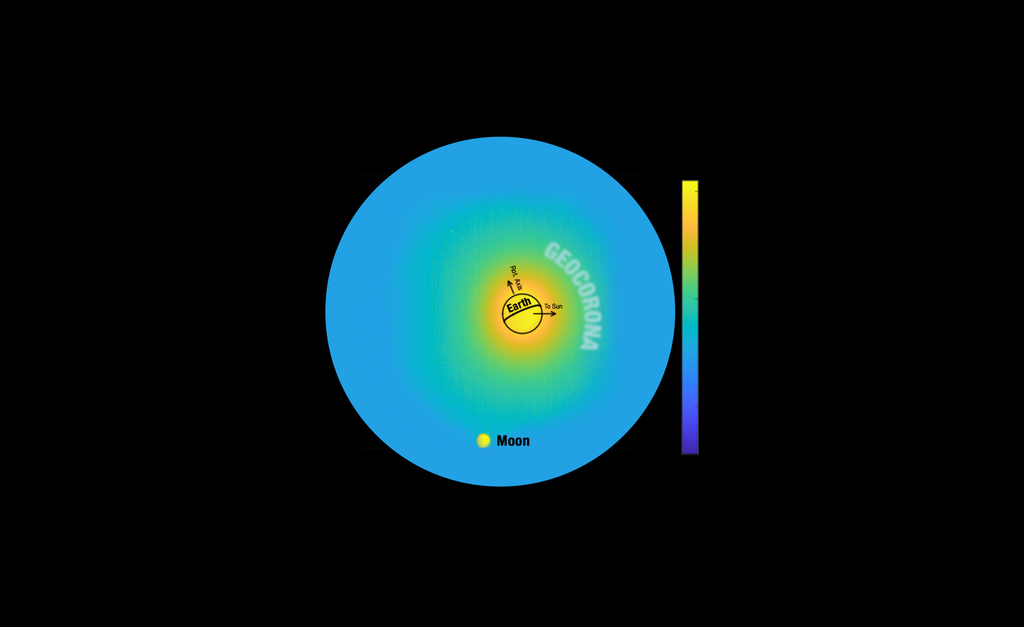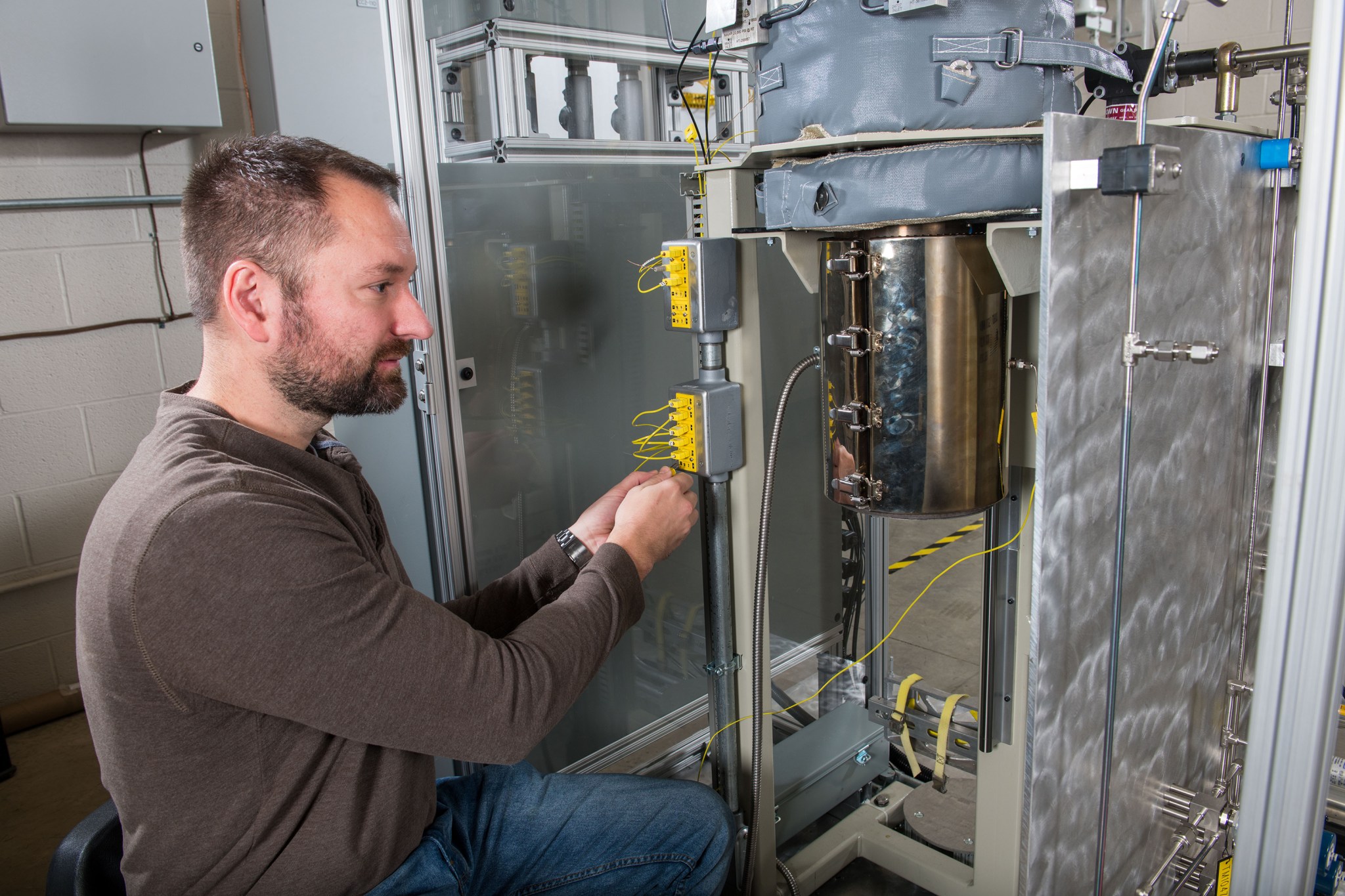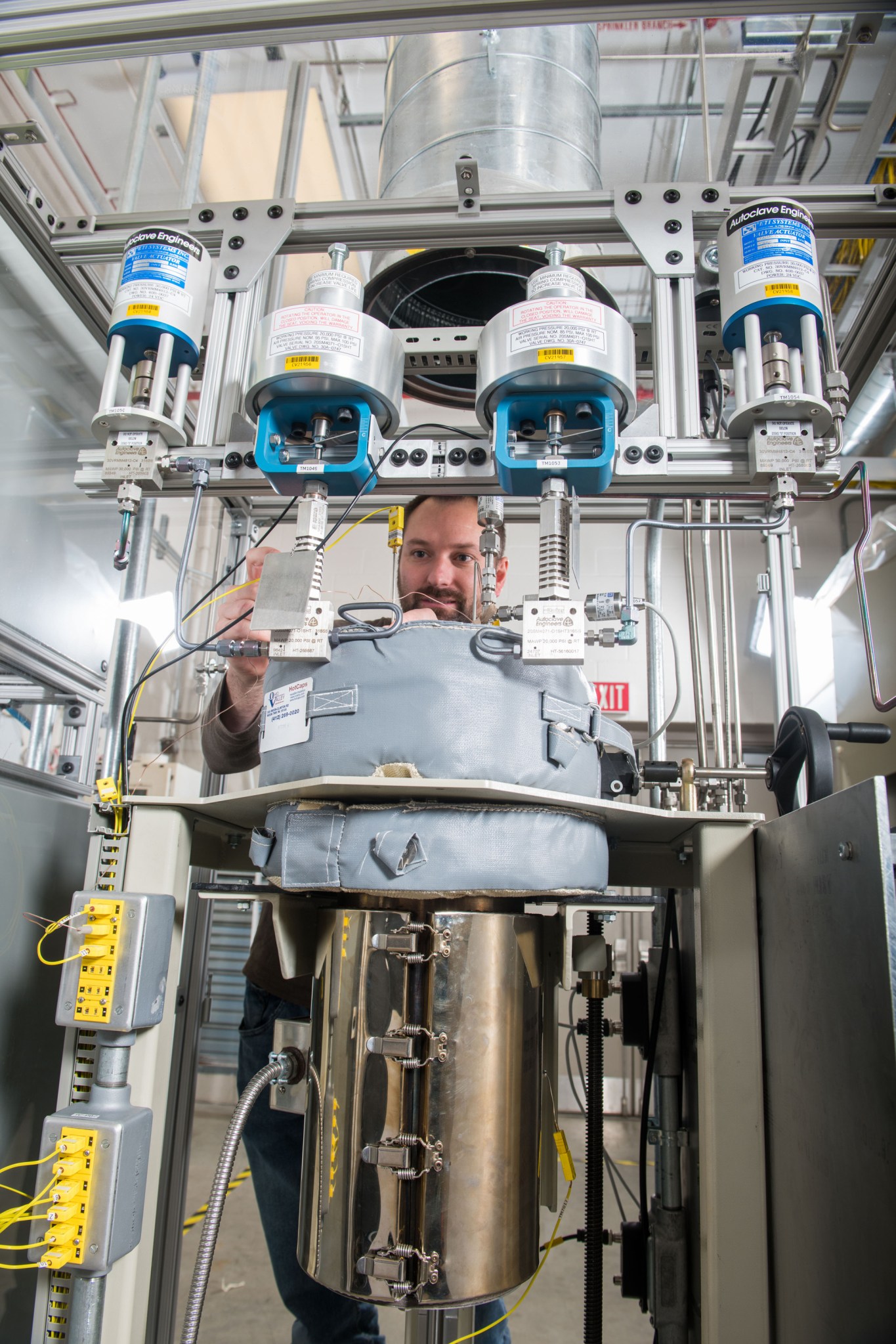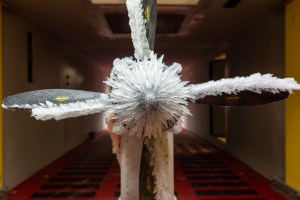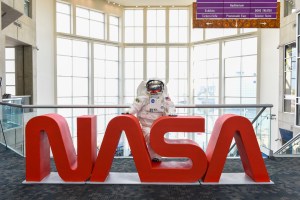Researchers have been exposing spacecraft components and instrumentation to the harsh environments of space for years in NASA Glenn’s Extreme Environments Rig (GEER), a test chamber which simulates atmospheric conditions of planets and moons in the solar system. These tests in high-temperature (up to up to 932° F), high-pressure (over 90 times the Earth’s surface pressure), toxic atmospheric planetary conditions, are performed to see if components can withstand the punishing environment, and are typically run for long periods of time.
But, a growing number of researchers want shorter, more individualized tests. That’s why engineers have developed a smaller version of the rig called MiniGEER.
“Both GEER and MiniGEER offer a wide variety of material and electronics testing in virtually any extreme space environment,” said GEER Facility Manager Jim Mullins. “The science and technologies that result from this testing will allow us to explore even farther and understand science more deeply.”
During testing in GEER, researchers dictate the requirements of the atmosphere and exposure time of their materials, while other investigators can test several extra material or technology articles separately, but within the same chamber. These materials cannot be removed until the end of the test cycle, even if it is longer than they desire.
The extra samples, such as electronics, lander parts and even some rocks and minerals, that require shorter-duration testing, can now be placed into MiniGEER, which offers a quicker, cost-effective way of testing in extreme environments.
MiniGEER also gives researchers more control to simulate different planetary and moon atmospheres. Since the samples are not included in a chamber with other materials, researchers can dictate their own exposure characteristics.
GEER and MiniGEER simulate many different planetary and moon atmospheres, but the main focus is Venus due to the extreme harshness of its atmosphere. If landers and their electronics can survive Venus conditions, there is a strong chance they will survive in many other space environments too.












